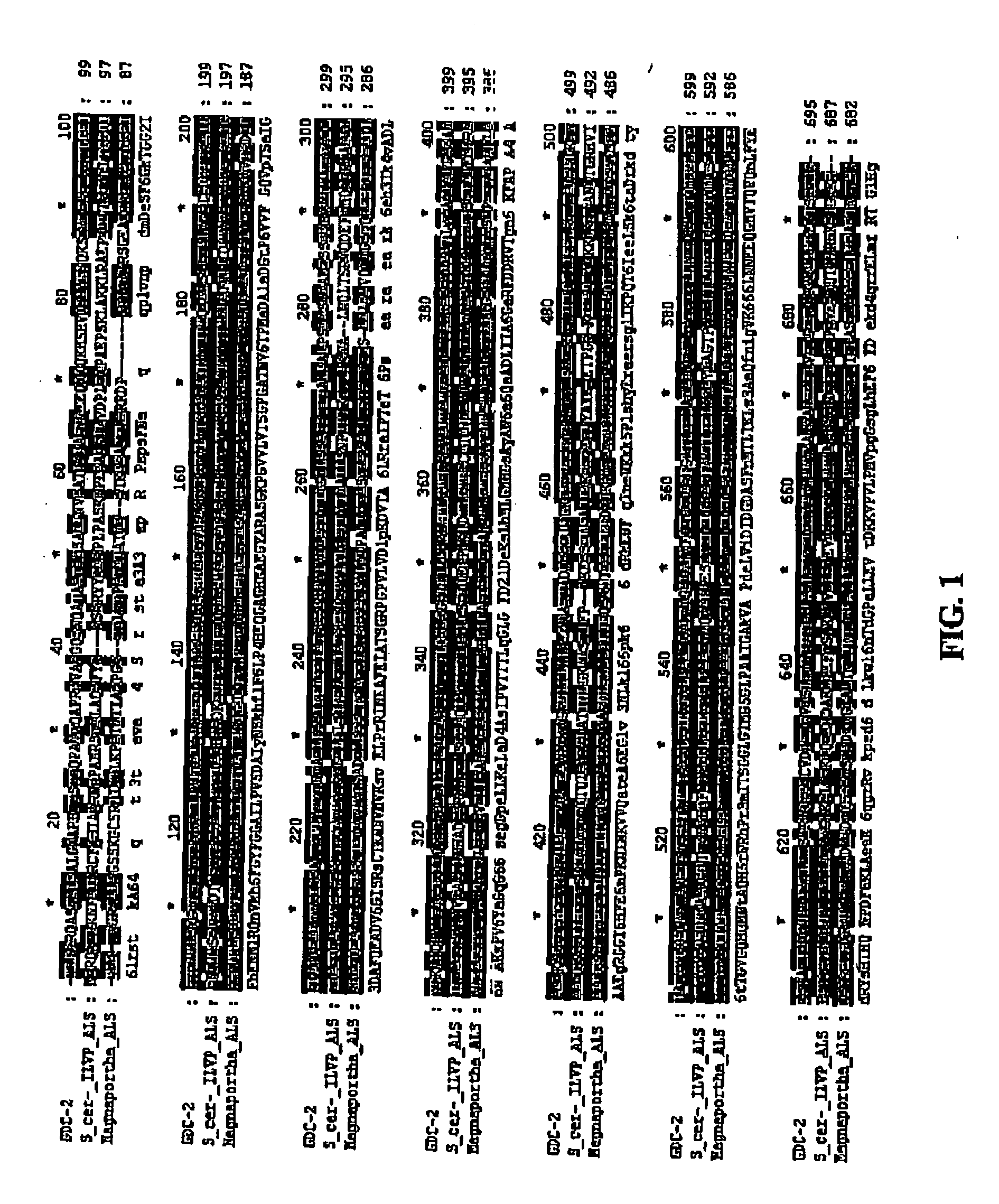GDC-2 genes conferring herbicide resistance
a technology of herbicide resistance and gene expression, applied in the field of genes encoding herbicide resistance, can solve the problems of toxic to bacterial cells, not only killing plant cells, but also toxic to these bacteria
- Summary
- Abstract
- Description
- Claims
- Application Information
AI Technical Summary
Benefits of technology
Problems solved by technology
Method used
Image
Examples
example 1
Isolation of.ATX6837 (from 50 mM Glyphosate Stock)
[0082] Strain ATX6837 was identified as a contaminant growing in a laboratory stock of 50 mM glyphosate. ATX6837 was isolated from this stock by methods known in the art.
example 2
Construction of cDNA Library from Strain ATX6837
[0083] ATX6837 was grown in (liquid media L+phosphorous) containing 5 mM glyphosate, and total RNA was isolated using Trizol reagent (Invitrogen). poly(A)+ mRNA was isolated from total RNA using Poly(A) Purist mRNA Purification kit (Ambion). cDNA was synthesized from polyA+ mRNA using ZAP CDNA Synthesis kit from Stratagene, and cloned into the lambda Zap II expression vector (Stratagene).
example 3
In vivo Excision of cDNA Clones
[0084] The ATX6837 cDNA library was excised in bulk as per manufacturers protocol (Stratagene), and transfected into the SOLR strain of E. coli (Stratagene), and plated directly on M9 minimal media plates containing thiamine, proline, ampicillin and 7 mM glyphosate and incubated at 37° C. (M9 media contains 30 g Na2HPO4, 15 g KH2PO4, 5 g NH4Cl, 2.5 g NaCl, and 15 mg CaCl2).
PUM
| Property | Measurement | Unit |
|---|---|---|
| Fraction | aaaaa | aaaaa |
| Mass | aaaaa | aaaaa |
| Mass | aaaaa | aaaaa |
Abstract
Description
Claims
Application Information
 Login to View More
Login to View More - R&D
- Intellectual Property
- Life Sciences
- Materials
- Tech Scout
- Unparalleled Data Quality
- Higher Quality Content
- 60% Fewer Hallucinations
Browse by: Latest US Patents, China's latest patents, Technical Efficacy Thesaurus, Application Domain, Technology Topic, Popular Technical Reports.
© 2025 PatSnap. All rights reserved.Legal|Privacy policy|Modern Slavery Act Transparency Statement|Sitemap|About US| Contact US: help@patsnap.com


